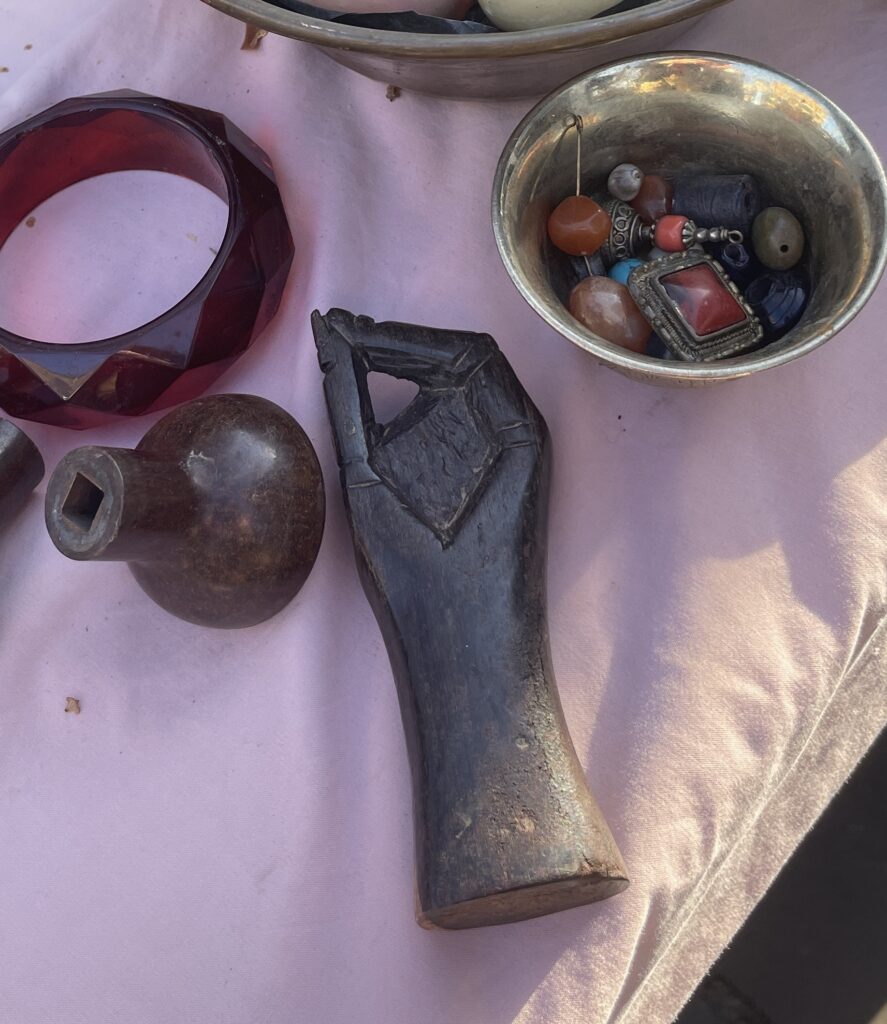
Walking through what is left of Camden Passage’s legendary antiques market in Islington, London last weekend, I stopped by the stand of an erudite dealer whose eye and breadth of experience I admire and respect. My own eye was caught by this carved wooden hand amidst his always fascinating, crowded stand.
Realising it is not a Figa or Fig fist, the clenched fist of protest, or even the global hand symbol for ‘okay’, I asked what it was for. He wasn’t absolutely sure, but thought it may have been a teaching aid to show students how to hold a pen or pencil properly. That makes sense, given the pose, which isn’t used for anything else apart from indicating something very tiny, or adding a pinch of salt to something! He had bought it some time ago in Malawi, Africa, and there’s no reason to doubt that it was made there, given the wood and what it is. There are no holes or signs of wear to indicate that it was part of something larger, like a lay figure. There are no slots to hold something (like a nib), and it’s too cumbersome to be a penholder. There’s also no wear around the hole indicating that that held something. I was intrigued, and bought it due to its sculptural form, because I’d never seen one before, and because there was clearly a story here.
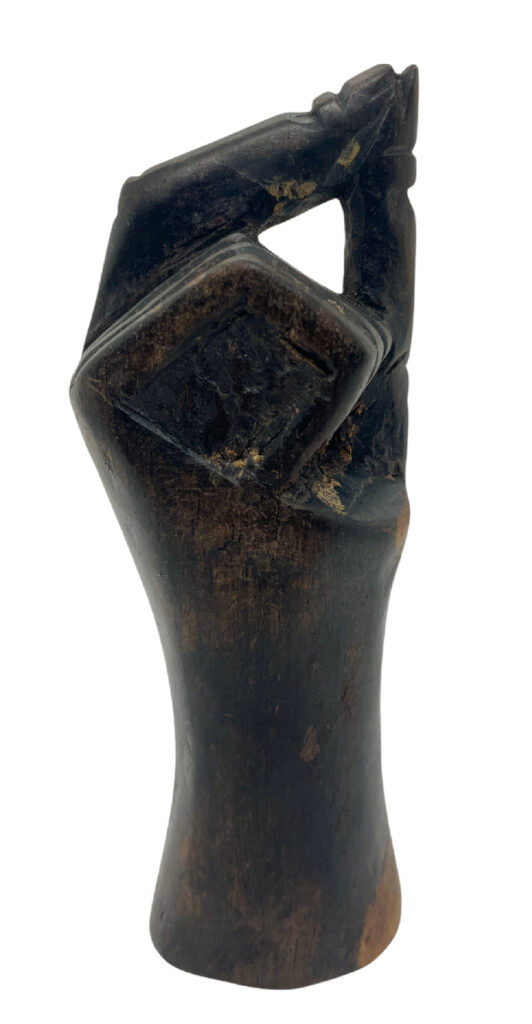
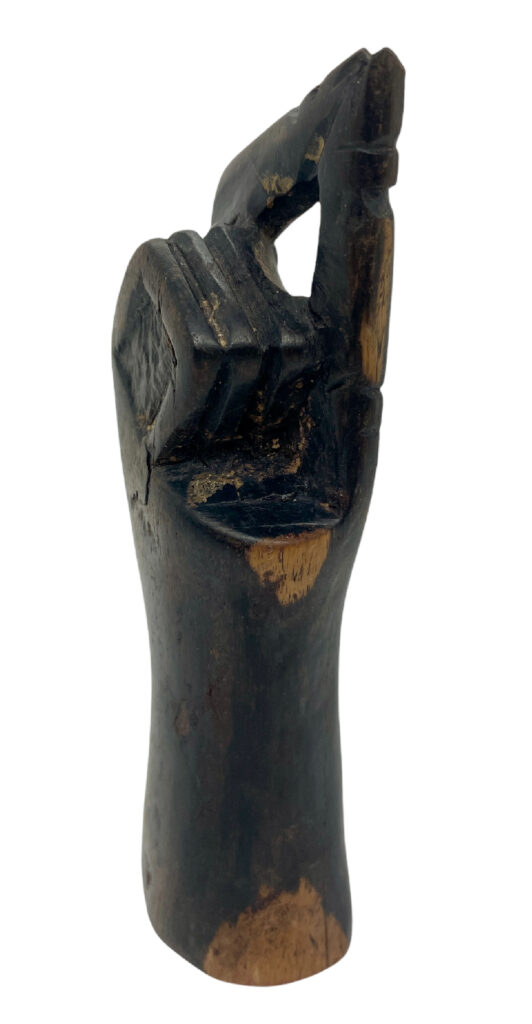
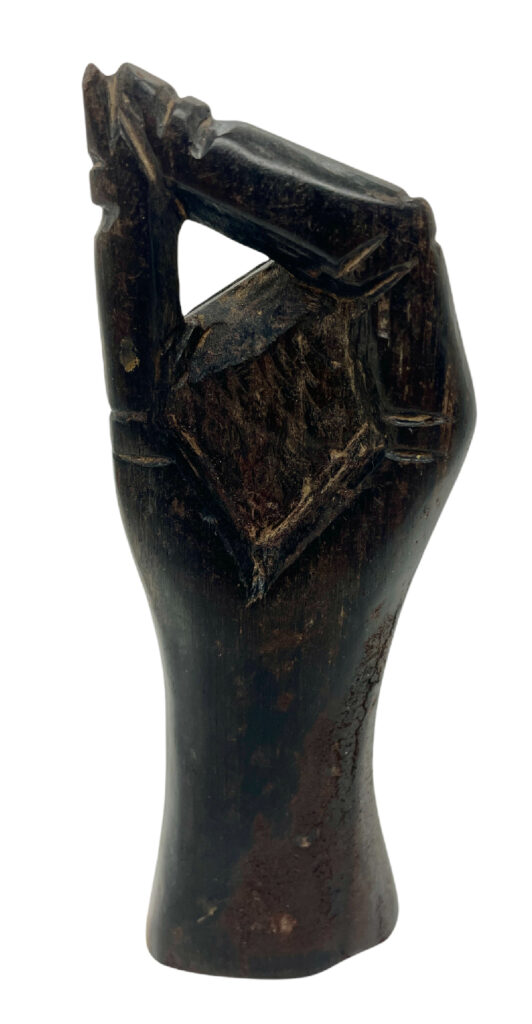
There’s no reason I can see to disbelieve this attribution as to its use. Although English is the dominant language spoken in Malawi, the indigenous language is Chichewa (originally Chewa or Nyanja) of the Bantu peoples. Today, it’s still used by many millions in that region. The language was first written down in the 1830s, when it was codified by António Gamitto. Before then, like so many cultures across the world, histories, stories etc were most often communicated verbally and remembered by different generations to be passed down. The German missionary and explorer Johannes Rebmann made more extensive documentation from the 1850s onwards, publishing a dictionary in 1877. In 1931, written Chichewa was standardised.
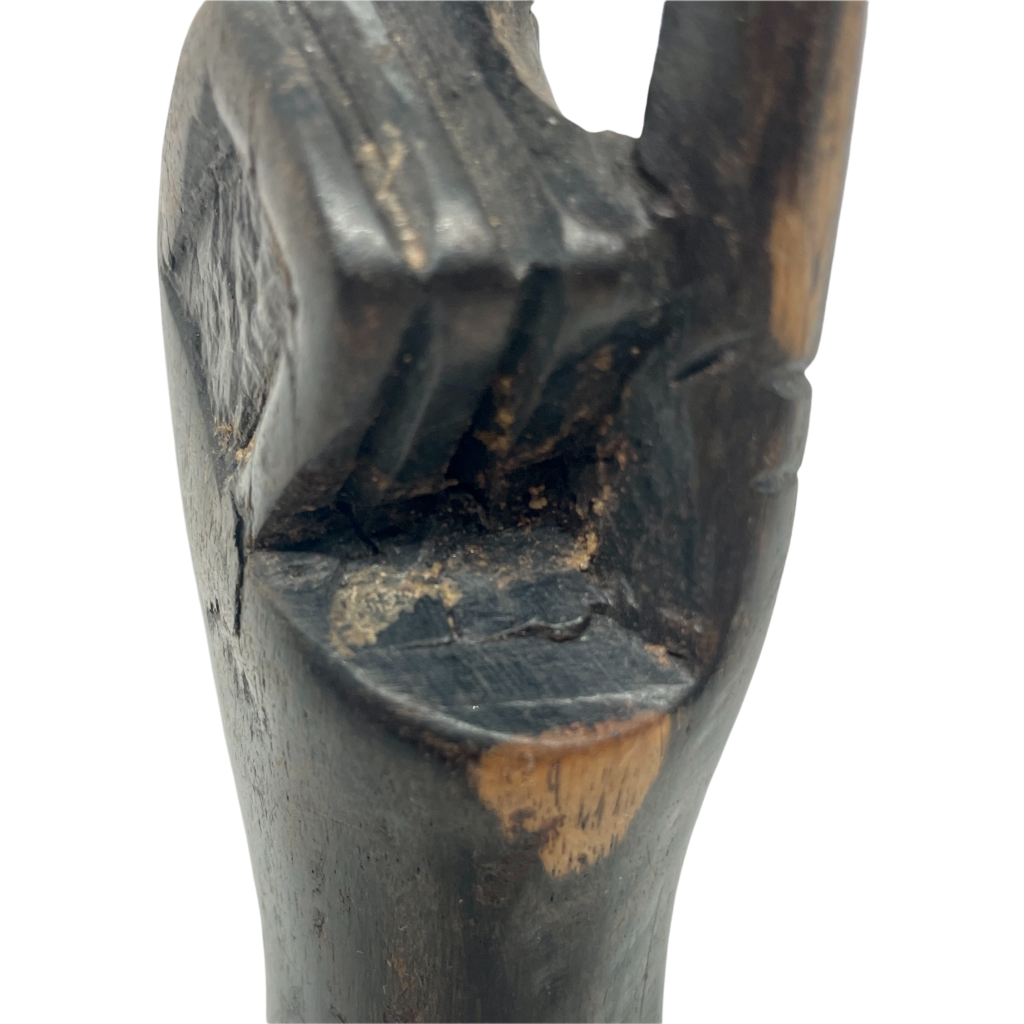
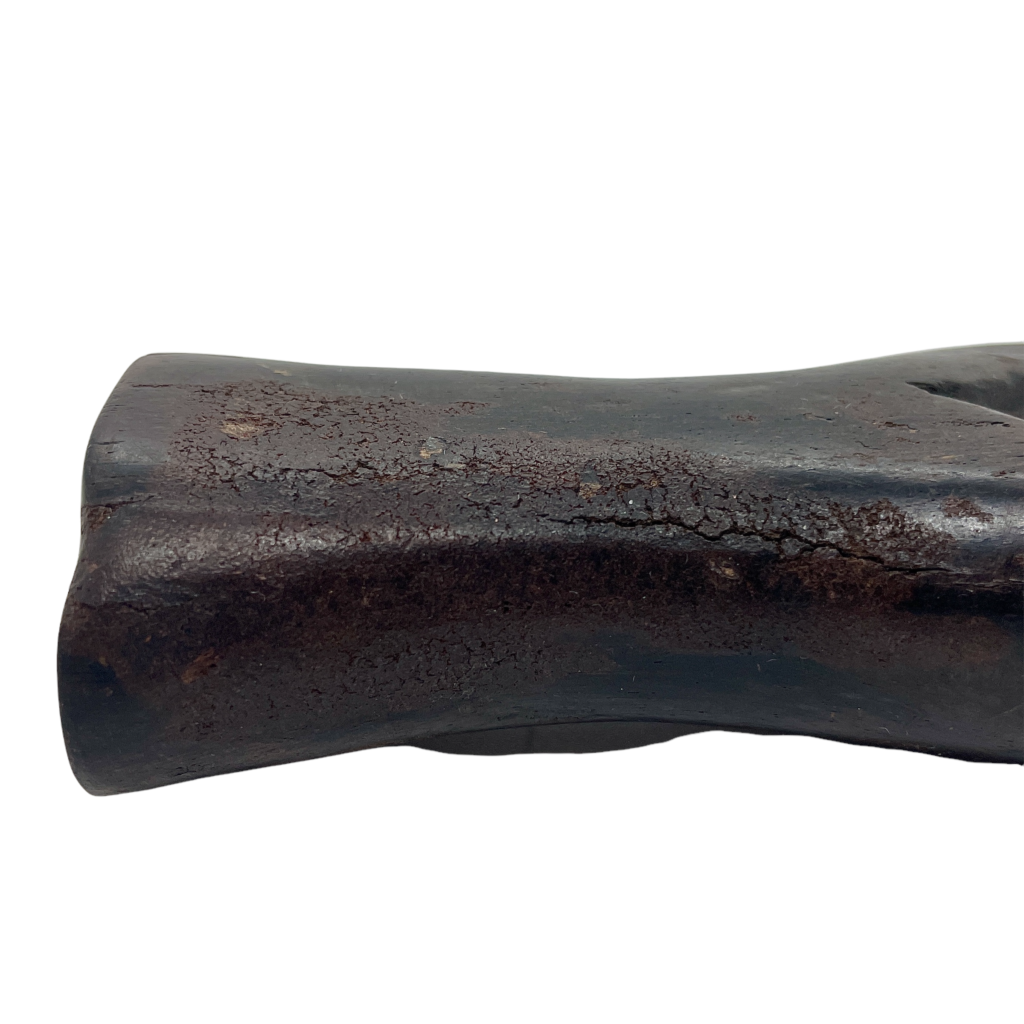
In 1891, the part of Africa now known as Malawi was colonised by the British, and the area became part of a protectorate of the United Kingdom. Undoubtedly, European styles of education would have been widened and, in some places, introduced – including writing. This would have easily and efficiently shown students the hand pose to be adopted to hold a pen or pencil to write with. As it’s small, measuring 4.75in (12cm) high, it could have even been aimed at children and their smaller hands.
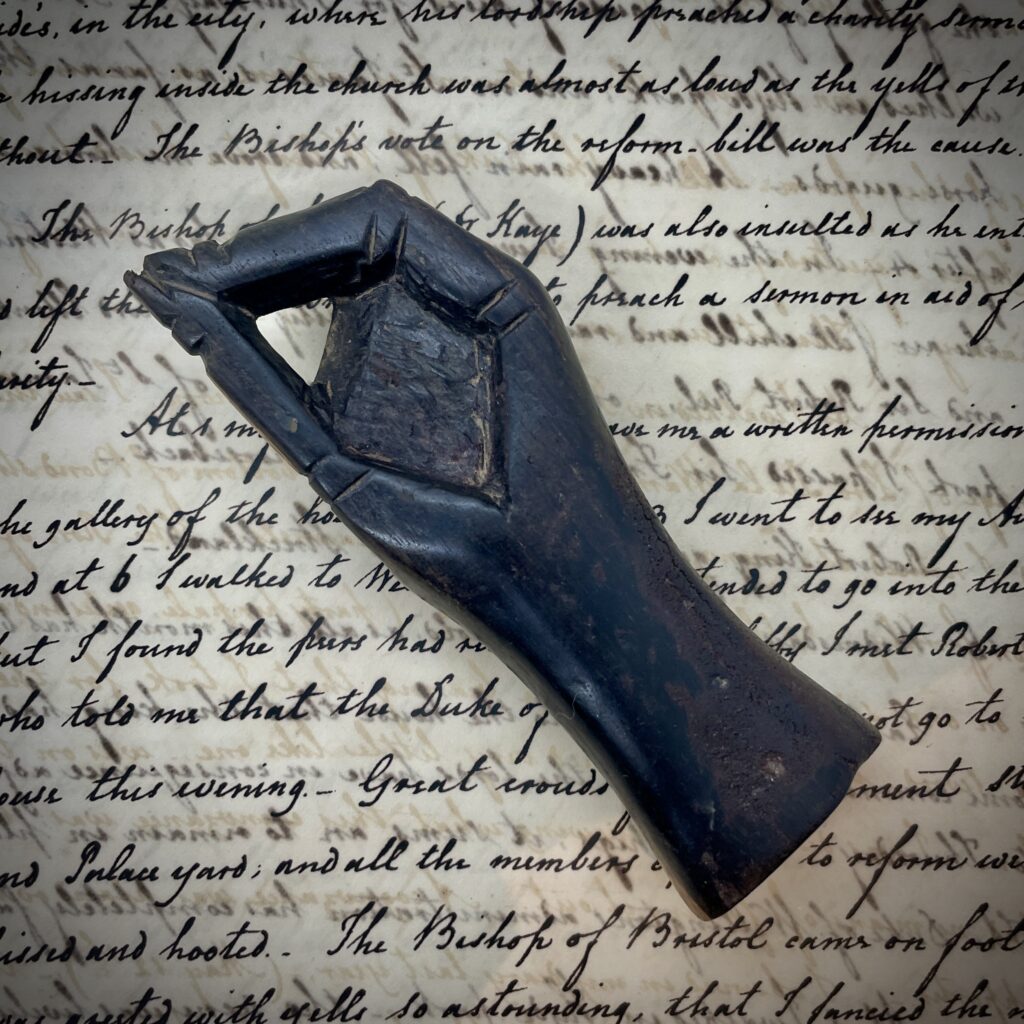
So, when does it date from? We have quite a date range – any time from the mid-19th century to the early 20th century. The piece has age – a gentle sheen from use, and some well worked in encrustations on the sleeve and under the fingers. The carving is clearly not new and has the sort of wear you’d hope to see on an older thing. I’d like to say the angularity is Art Deco, but I’m not so sure about that. My feeling is that it dates from around 1900, when the British must surely have spread Western style education and the use of English in writing and speech. As it spread and as illustrated books became more affordable and widespread, such ‘homemade’ implements would have no longer been necessary.
The old cliché about the business I’m lucky to work in is perfectly true – you really do learn something new every day. Or should I take this attribution and story ‘with a pinch of salt’…?!
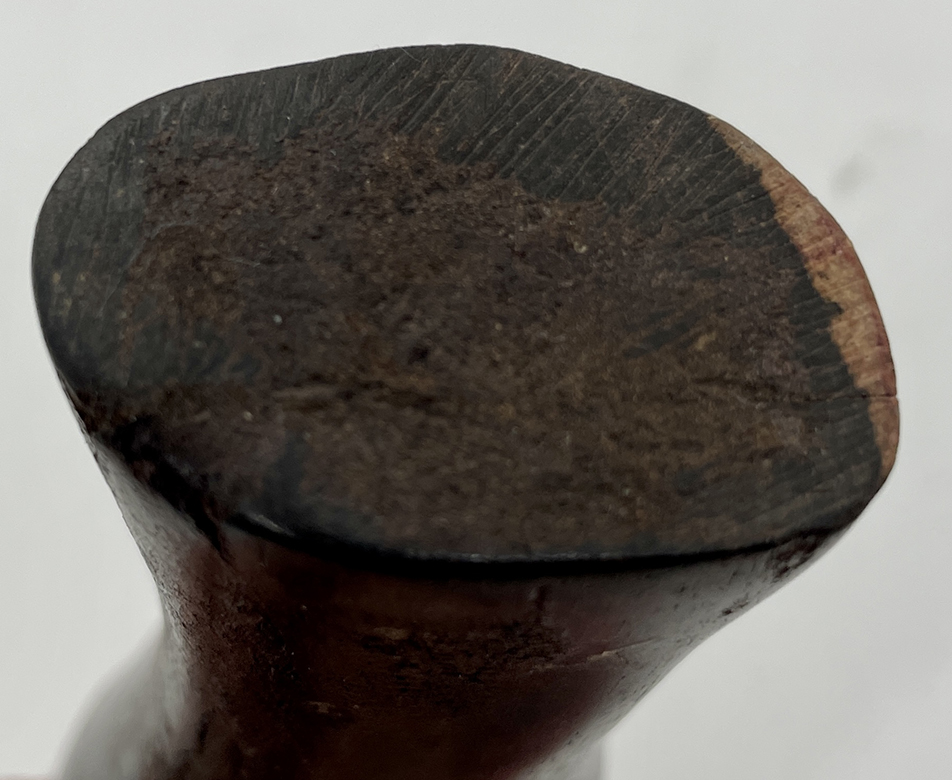
Postscript. It has been suggested (by object.provocateur and others) that it was used to pound tobacco leaves into snuff, with the pose of the hand indicating taking a pinch of snuff from a box. Have they sniffed out the real use?! I think so. Snuff is said by some to have reached Africa before European and British missionaries, but it was apparently only used in a few countries, notably South Africa where it is still used by some today. There are some hardened deposits on the base, making that use possible, but there arguably isn’t enough wear to the base or the edges of the base to indicate that it was used to pulverise even thin dried leaves. The original carving scratches are still visible rather than being filled and – just like many snuff boxes – I’d expect to be able to smell tobacco from the deposits too! Unless it simply wasn’t used much…

